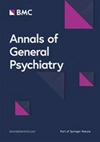On mental pain and suicide risk in modern psychiatry
IF 3.6
3区 医学
Q1 PSYCHIATRY
引用次数: 0
Abstract
Facing suicide risk is probably the most difficult task for clinicians when dealing with patients in crisis. It requires professional, intellectual, and emotional efforts. Suicide risk assessment can sometimes be distressing for clinicians, and such a state may favour the avoidance of an in-depth exploration of suicidal thoughts and behaviour. Patients often feel subjected to interpersonal assessments with little opportunity to explore their perspectives. The "One size fits all" approach tends to create distance and paradoxically contributes to an increase in the risk of suicide. Traditional clinical factors may be of limited value if a shared understanding of the patient’s suicide risk is missed. To understand the suicidal mind, it is necessary to take the point of view of the subject in crisis. In this essay, the “operational model of mental pain as a main ingredient of suicide” provided by Edwin Shneidman’ is overviewed with the aim of a better empathic understanding of patients’ sufferance. With a phenomenological approach, the suicidal crisis appears as a complex, pervasive state rather than as a symptom of a mental disorder, as the new paradigm also suggests. In this regard, the "mentalistic" aspects of suicide propose a broader insight into the suicidal scenario far beyond the diagnosis of psychiatric disorders. In this article, the perspective of individuals who deem their mental pain to be intolerable is described to make sense of their ambivalence between the wish to die and the wish to live that can prevail if relief is provided.现代精神病学中的精神痛苦与自杀风险
面对自杀风险可能是临床医生处理危机病人时最困难的任务。这需要专业、智力和情感方面的努力。自杀风险评估有时会让临床医生感到苦恼,而这种状态可能有利于避免对自杀想法和行为进行深入探讨。患者往往觉得自己是在接受人际评估,很少有机会探索自己的观点。一刀切 "的方法往往会造成距离感,反而会增加自杀的风险。如果缺乏对患者自杀风险的共同理解,传统临床因素的价值可能有限。要理解自杀者的心理,就必须站在危机主体的角度。本文概述了埃德温-施奈德曼(Edwin Shneidman)提出的 "作为自杀主要因素的精神痛苦操作模式",目的是更好地以感同身受的方式理解病人的痛苦。从现象学的角度来看,自杀危机是一种复杂的、普遍存在的状态,而不是新范式所认为的精神失常的症状。在这方面,自杀的 "精神学 "方面提出了对自杀情景的更广泛的见解,远远超出了对精神障碍的诊断。本文描述了那些认为自己的精神痛苦无法忍受的人的视角,以理解他们在希望死亡和希望生存之间的矛盾心理,如果能够提供缓解,这种矛盾心理就会占上风。
本文章由计算机程序翻译,如有差异,请以英文原文为准。
求助全文
约1分钟内获得全文
求助全文
来源期刊

Annals of General Psychiatry
PSYCHIATRY-
CiteScore
6.60
自引率
2.70%
发文量
43
审稿时长
>12 weeks
期刊介绍:
Annals of General Psychiatry considers manuscripts on all aspects of psychiatry, including neuroscience and psychological medicine. Both basic and clinical neuroscience contributions are encouraged.
Annals of General Psychiatry emphasizes a biopsychosocial approach to illness and health and strongly supports and follows the principles of evidence-based medicine. As an open access journal, Annals of General Psychiatry facilitates the worldwide distribution of high quality psychiatry and mental health research. The journal considers submissions on a wide range of topics including, but not limited to, psychopharmacology, forensic psychiatry, psychotic disorders, psychiatric genetics, and mood and anxiety disorders.
 求助内容:
求助内容: 应助结果提醒方式:
应助结果提醒方式:


